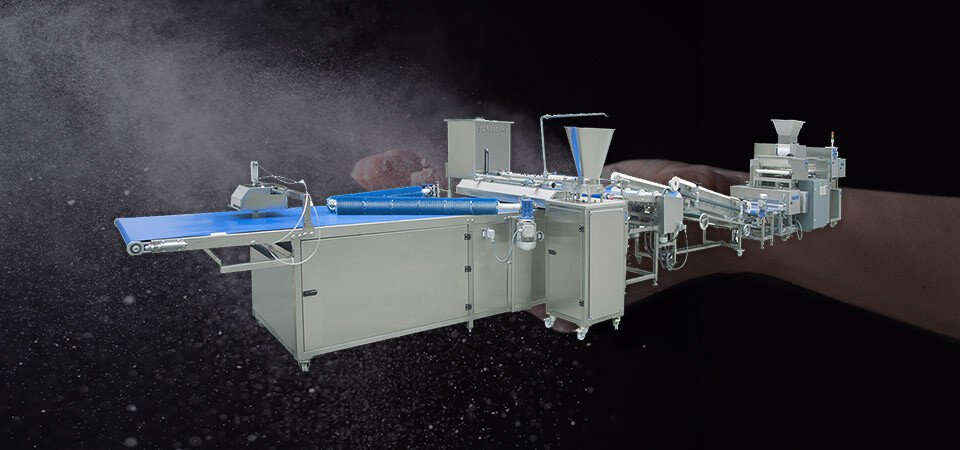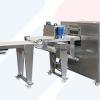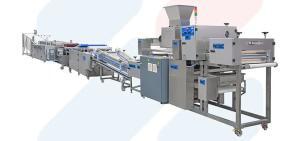Borek/pastry dough machines are especially designed to be used in enterprises requiring mass production. There are various machines that can produce according to the dough thickness, filling and shape of the desired borek/pastry. The main purpose of borek/pastry dough machine is to minimize the errors that may happen especially in pastries with thin phyllo dough and to ensure maximum production in a short time. In this way, both time and labor can be saved. Some general features of pastry machines are as follows;
- The machines have various shaping apparatus, and fresh or frozen pastris can be made. Also, many different types of pastry can be produced such as ravioli, Chinese pastry, hunter’s borek, rolled borek, classic stuffed pastry, cigarette borek, curry puff, muska borek(pastry pockets)
- The machines usually have a stainless-steel body. This guarantees both healthy and long-lasting production. It is important to prefer products made of stainless steel to benefit the machine for a long time.
- Most of the machines are designed according to the needs of the users. For this reason, they can automatically refill when the material used is missing or cut off the excess dough.
- Thanks to this design, the machines provide production with maximum efficiency, in the groove.
- They can easily make difficult to make pastries such as muska borek
- The machines use not only meat fillings, but also vegetable fillings, and produce pastries completely according to the users’ wishes
Classic Stuffed Borek/Pastry Machines
When we talk about stuffed borek/pastry, it means classic pastries in which all kinds of filling are used. Usually having a classic shape, these types of boreks/pastries are the most preferred type of pastry. For this reason, users often prefer stuffed pastry machines. The general features and some advantages of these machines are as follows;
- Designed directly for the production of stuffed pastry, these machines have a fast and practical working system.
- They are suitable for use not only with minced meat, but also with many other fillings such as cheese, potato, spinach, and eggplant.
- Machines using stainless steel guarantee both health and durability.
- The machines usually consist of several different parts suitable for pastry production. These parts are divided into dough feeding unit, lamination unit, additional oil unit, stretching unit and filling unit, wrapping unit and cutting unit. Each unit has special equipment used in pastry production.
- The length of the boreks/pastries is adjusted with an adjustable cutting knife so that users can make the pastries in the desired size
- Special wrapping brushes are used for the thickness and wrapping settings of the pastries
- For this kind of machines suitable for mass production, the part that is used to keep the borek/pastry untouched until the end of production is the coils. All parts here prepare the pastry in complete protection
- The average dimensions of the machines are 15200*1700*1900
- They have an average production capacity of 300 to 500 kg per hour.
Cigarette Borek Machines
Cigarette Borek/Pastry is so named because of its cylindrical shape and length. Although a cheese filling is generally used, it can also be made with some other fillings. Similar to other pastries, it is wrapped using ready-made or hand rolled phyllo dough. Cigarette Borek Machines are also designed for mass production. Some features of these machines, which usually use a special wrapping apparatus, are as follows;
- Cigarette borek machines are also known as dough wrapping machines. And with this wrapping feature, not only round but also rectangular boreks can be made.
- The dimensions of the machine are generally designed as 50*60*60 cm
- Machines with a weight of approximately 80 kg can produce an average of 2000 cigarette boreks (rolls) per hour
- Larger and industrial type cigarette pastry machines are produced in 4300*680*1440 mm dimensions with a weight of 320 kg
- When using the machines, the dough is placed in the tank at the first stage. After the dough is heated and ready for wrapping, the desired thickness is selected and the wrapping process is started







